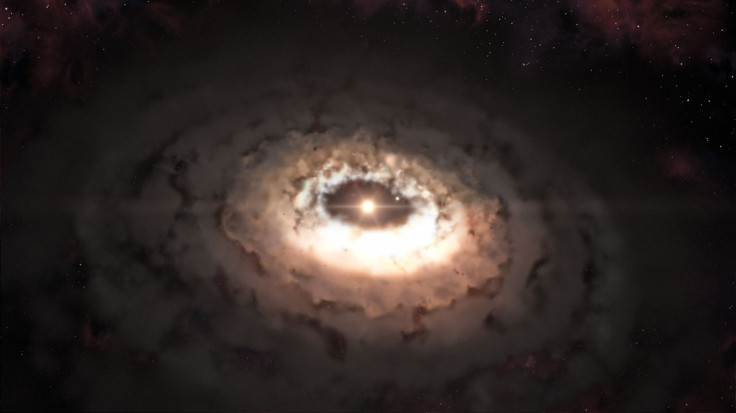Dust Trap Surrounding Young Star Could Act As A 'Comet Factory' [PHOTO]
Astronomers were able to image a “dust trap” surrounding a star that could explain how comets and planets are formed. These areas around a star slowly gather dust and other space debris until the clumps become big enough to form comets or planets.
Astronomers used the Atacama Large Millimeter/submillimeter Array, or ALMA, located in Chile, to image the dust trap, reports the European Southern Observatory. The research will be published in the journal Science and astronomers believe the dust trap could provide clues about planet and comet formation.

Planets orbit stars but astronomers did not understand how planets first formed around budding stars. The dust trap helps explain how planets and comets can be formed around a star as these areas act as a nursery, protecting tiny specks of dust as they develop into larger rocks and space debris. Astronomers used ALMA to observe the dust trap in the system Oph-IRS 48, approximately 400 light-years from Earth, reports ESO.
The ESO release notes that prior research using computer models indicated dust grew into larger rocks by crashing into one another and sticking. Through this process, dust specks would soon form tiny clusters that would eventually get destroyed as they smash into other large dust clusters. Astronomers were unable to figure out how dust specks could grow into comets or planets if they constantly deconstructed and had to be reassembled.
Dust traps were merely a hypothesis created by astronomers to explain comet and planet formation, and the ALMA image confirmed that thesis. Lead astronomer Nienke van der Mare, a Ph.D. candidate from the Netherlands' Leiden Observatory, said of the dust trap discovery, “It’s likely that we are looking at a kind of comet factory as the conditions are right for the particles to grow from millimeter to comet size. The dust is not likely to form full-sized planets at this distance from the star. But in the near future ALMA will be able to observe dust traps closer to their parent stars, where the same mechanisms are at work. Such dust traps really would be the cradles for new-born planets.”
Dust traps can last for hundreds of thousands of years, notes ESO, and even after these nurseries become dormant the amount of dust accumulated could take millions of years to drift away. In Oph-IRS 48, astronomers discovered a star surrounded by gas and a central vortex created by a nearby planet or companion star, notes ESO.
Earlier observations, using ESO’s Very Large Telescope, revealed the small specks of dust were found in a ring-like structure but large dust clumps were found in an area that was in the shape of a cashew. Compared to the ring of small dust particles, the dust traps are found in higher pressure regions around the star, forcing clumps of dust particles together. Future research using ALMA can lead to further understanding of the role of dust traps in comet and planet formation.
© Copyright IBTimes 2024. All rights reserved.








